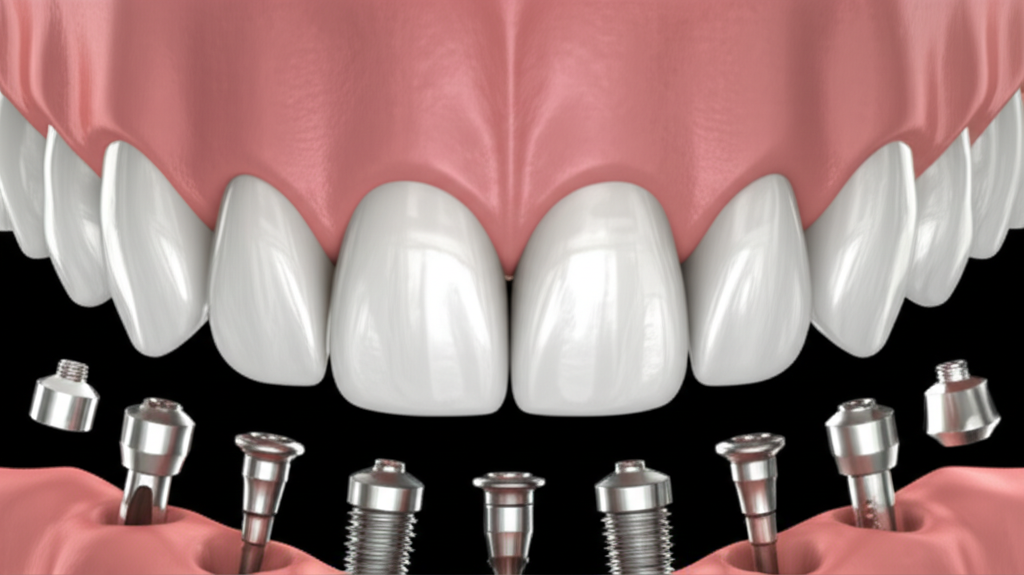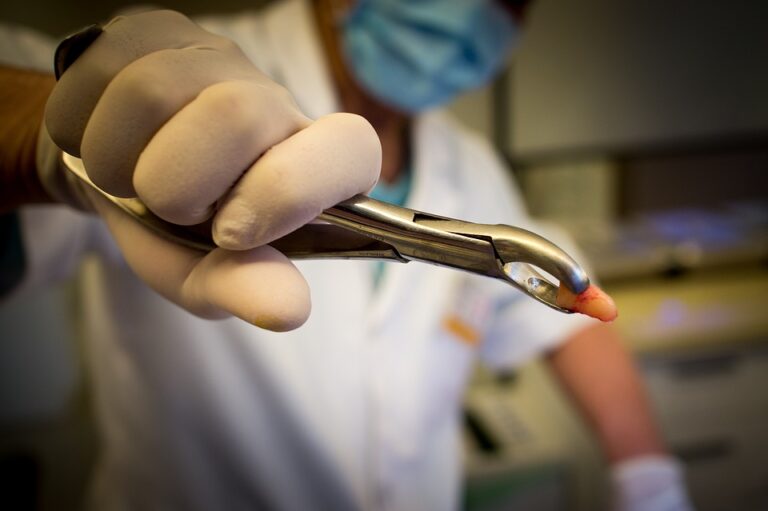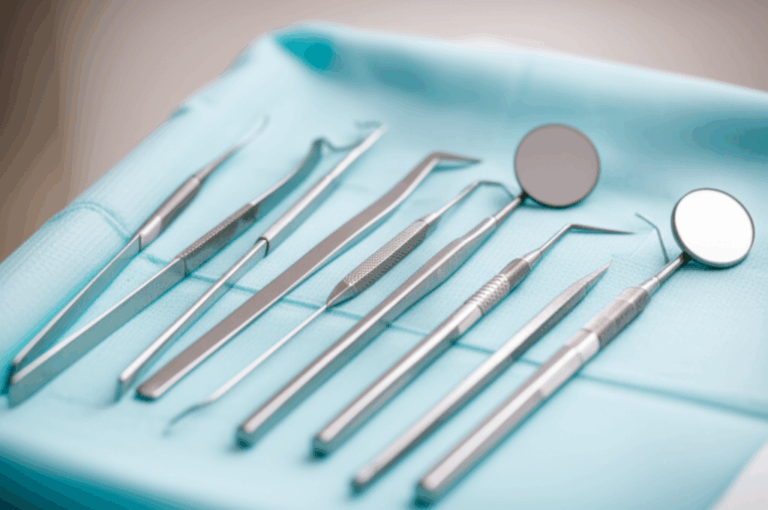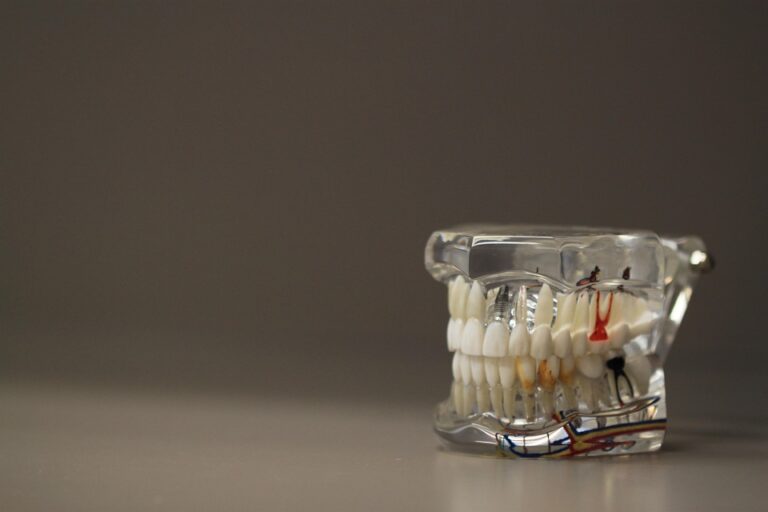
What Are All-on-X Dental Implants? Your Complete Guide to Permanent Full Arch Teeth
Table of Contents
- Introduction: Understanding All-on-X Dental Implants
- Deciphering “All-on-X”: What Does the “X” Represent?
- The Life-Changing Benefits of All-on-X Dental Implants
- The All-on-X Dental Implant Procedure: A Step-by-Step Overview
- Who Is a Candidate for All-on-X Dental Implants?
- Understanding the Investment: All-on-X Dental Implant Cost
- All-on-X Recovery, Maintenance, and Long-Term Care
- Conclusion: Reclaim Your Smile and Quality of Life
Introduction: Understanding All-on-X Dental Implants
When I first started looking for ways to replace missing teeth, I was confused by all the choices out there. Dentures, bridges, single implants—they all promised different things. But when I heard about All-on-X dental implants, I realized I found something special: a way to have strong, permanent teeth if you need to get a whole row fixed.
Let’s be honest—losing most or all of your teeth is tough. Removable dentures can slip and move, and getting an implant for each tooth sounds like too much work and money. All-on-X tries to fix all these problems at once. If you’re fed up with dentures or feel your confidence slipping, I hope my story and what I’ve learned can help you.
Deciphering “All-on-X”: What Does the “X” Represent?
One question I asked right away was: What does “All-on-X” mean? The answer is pretty simple once you hear it.
The Main Idea
Instead of putting in a new root for every single missing tooth, All-on-X means a full set of new teeth (a fixed bridge) sits on a small number of implants—usually four or six—carefully placed in your jaw. So “X” just means a number, based on what you need.
For example, “All-on-4” means your new teeth for one jaw are held up by just four dental implants. Some people might need five or six instead for extra strength, so you might see “All-on-6” or “All-on-5.”
How Many Implants—and Why?
From what I found—talking to dentists and reading patients’ stories—the number of implants depends on your bone, your mouth shape, and what your doctor thinks is best. In my own case, my dentist saw I had good bone at the front of my jaw but less in the back, so they placed four strong titanium implants at certain angles, and that worked great for me.
The Simple Parts
The All-on-X system has three main parts:
- Dental Implants: These are like replacement “roots”—metal or ceramic posts that go in your jawbone.
- Abutments: Small pieces that connect the implants to the bridge.
- Fixed Dental Bridge: Your new teeth, made just for you, that are fixed to those posts.
This is not like old-school dentures you take out at night, clean by themselves, and that can cause sore spots.
The Life-Changing Benefits of All-on-X Dental Implants
I can’t say enough about how much All-on-X dental implants changed my life—and others in my group. Here’s why so many people pick this option when they have lots of missing teeth.
Eat Your Favorite Foods Again
No more sticking to soft foods. With All-on-X, you’ll (eventually) be able to bite into apples, chew steak, or eat corn on the cob without worrying your teeth will move. The implants are stuck tight, so your teeth don’t wiggle.
Looks Like Real Teeth
When my friends first saw my new teeth, some didn’t even notice—they just thought I looked happier and younger. All-on-X bridges are shaped and colored to look like real teeth, so your smile looks natural.
Talk Clearly Again
Anyone with loose dentures knows about slurring or clicking sounds. All-on-X bridges don’t move, so you can talk normally again.
Keep Your Jawbone Strong
This was huge for me. Dental implants help your bone stay healthy, not just your looks. Removable dentures can let your jawbone waste away, but implants help keep your bone strong so your face shape stays the same.
Feel Comfortable and Confident
Since the first day with my new teeth, I stopped worrying about sores, slips, or sticky glue. It all feels solid and strong—almost like my old teeth.
Fast Results: Teeth in a Day
Believe it or not, lots of All-on-X treatments can give you basic “teeth in a day.” That means you leave the dentist with a new set of teeth, not with gaps or a flimsy denture.
Lasts a Long Time
If you take care of your new teeth and see the dentist, the implant posts can last the rest of your life. After 10–20 years, you might want a new bridge for style or comfort, but the base stays.
If you want more tips on keeping teeth healthy, I found this in-depth resource about maintaining teeth health super helpful while getting used to my new smile.
The All-on-X Dental Implant Procedure: A Step-by-Step Overview
Wondering what happens if you pick All-on-X? I was nervous before my surgery, but knowing the steps made it easier.
Step 1: First Meeting and Planning
You start by getting checked out:
- Full Check-Up: The team looks at your teeth, gums, and jawbone.
- 3D Scan: This gives a clear view of your jaw and helps the dentist plan where to put the implants.
- Health Review: Your general health and any problems like diabetes get checked.
- Digital Planning: Some clinics do the whole thing on the computer before starting.
Step 2: Surgery Day
On the day, you get numbed up, and sometimes a little medicine to relax. The doctor puts the implants in certain spots. If you need any teeth pulled or a little bone smoothed out, they usually do it right then.
Step 3: Temporary Teeth the Same Day
What amazed me? Leaving the office with a full set of teeth! The dentist puts in a temporary bridge right after surgery. You can’t eat very hard foods yet, but they look and feel much better than gaps.
Step 4: Healing
Over the next 3–6 months, your jawbone and the implants join together. You’ll need to eat soft foods and keep everything clean. My dentist gave me a list of do’s and don’ts so I healed right.
Step 5: Your Final Teeth
After your mouth heals, the dentist takes impressions for your final bridge. You can talk about materials—strong tooth-colored ceramics or more basic ones. The finished bridge is then set onto your implants, fitted, and adjusted.
Who Is a Candidate for All-on-X Dental Implants?
Let’s be straight: All-on-X isn’t for everyone, but it works for most people with lots of missing teeth. Here’s what my dentist checked before saying yes to me.
Good Candidates
- Missing most or all teeth in a row (upper or lower jaw)
- Teeth not healthy because of decay, gum problems, or injury
- Tired of removable dentures that don’t fit well
Health Matters
You need to be in decent general health. Things like diabetes should be under control, and you have to keep your mouth clean. Smoking is a problem—it slows healing and makes things riskier, so my dentist said quitting would help me a lot.
Jawbone Strength
A lot of people don’t need bone grafts because All-on-X uses implants at an angle and in spots where there’s still enough bone. For me, even though I lost some bone at the back, I didn’t need any extra work.
Not a Good Fit If
- You have health problems that aren’t managed
- Your jawbone is just too thin everywhere
- You’re still smoking a lot or your gums aren’t healthy and treated
If you want more info on dental problems that affect your chances, I found this overview of dental diseases a useful place to start.
Understanding the Investment: All-on-X Dental Implant Cost
If you’re like me, you might have been shocked when you saw what “teeth in a day” cost. Yes, All-on-X is a big investment, not a cheap fix. But let me explain why.
Typical Price Range
Most clinics charge anywhere from several thousand to tens of thousands (USD) for one row of teeth. The price changes depending on how many implants are needed, which material is used, and if you need any extra work done.
What Changes the Price?
- How Many Implants: Four, five, or six.
- Material of the Bridge: Hard tooth-colored ceramics cost more than plastic but look and last better.
- Where You Live and the Office: Big cities or top doctors cost more, but sometimes they have more experience.
- Extra Steps: Taking out teeth, adding bone, or fixing sinuses add to the cost.
Insurance and Payment
What surprised me: Most insurance plans call this “cosmetic,” so they don’t pay much if at all. Many offices offer payment plans. I paid over 18 months and saw it as money spent on my health, confidence, and happiness.
All-on-X Recovery, Maintenance, and Long-Term Care
The journey doesn’t stop after you get your new smile—keeping it nice is just as important.
Right After Surgery
The first few days I had some swelling and mild pain, but cold packs and normal pain pills worked fine. I stuck to soft foods—soup, eggs, and smoothies.
Cleaning Rules
Taking care of All-on-X teeth needs some effort. Brush twice a day, clean the gum line, use a water flosser, and get regular check-ups (every 3–6 months). Special brushes or super-floss help clean around the bridge.
Check-Ups
Seeing the dentist regularly is a must. They’ll check the fit, how your gums are doing, and if anything needs fixing. If you notice clicking, sore spots, or something loose, call right away.
The implants themselves can last a long time, even for life. The bridge (the teeth part) may need to be replaced or repaired after 10–20 years, just from normal use.
Watch for Problems
Most people do great, but sometimes things go wrong like swelling, pain, or, rarely, an implant not healing right. If you notice anything weird, tell your dentist quickly.
For lots of easy tips on mouth care, check this hands-on dental care resource.
Conclusion: Reclaim Your Smile and Quality of Life
Looking back, getting All-on-X dental implants was the best thing I did for myself. It was a big choice—I took my time, asked questions, and trusted the right dental team.
Now? I eat birthday cake with my kids, laugh with my friends, and talk at work without worry. These new teeth changed my life for the better.
Don’t settle for “just okay.” Getting a full row of real-looking, fixed teeth is a big step, but with the right info and a caring dentist, it’s very possible.
If you’re thinking about it, talk to a real dental implant expert for a meeting. Your new smile—and a new way of life—could be closer than you think.








